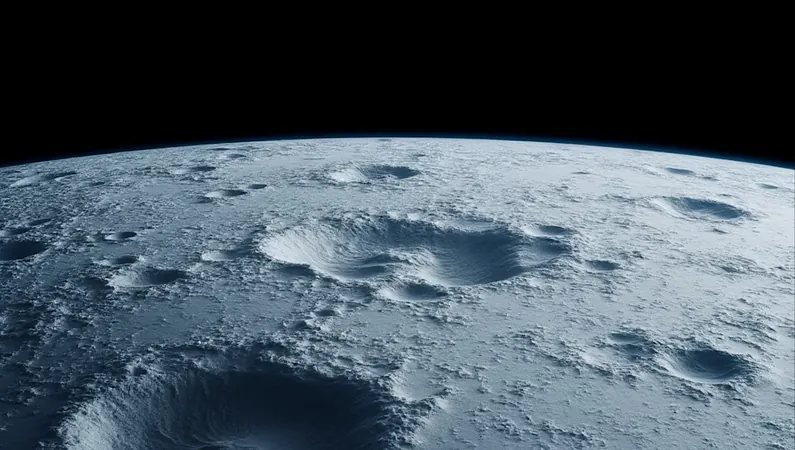
Unraveling the Mysteries of Icy Moons: The Quest for Internal Oceans
2024-10-30
Author: Siti
Introduction
Recent studies have provided compelling evidence of internal oceans lurking beneath the icy surfaces of moons such as Europa and Enceladus. These celestial bodies exhibit vapor plumes that suggest the presence of liquid water under their ice shells, leading to exciting implications for the potential for life beyond Earth.
Formation and Evolution of Internal Oceans
Understanding the formation and evolution of these internal oceans is crucial, especially their temperature distributions and their interactions with various forces. Tidal heating and radiative cooling are key processes that maintain liquid water beneath the surface of these icy moons. The delicate balance between these processes could be vital in supporting microbial life in such extreme environments.
Advanced Simulations to Explore Tidal Heating
To deepen our understanding, researchers are leveraging advanced simulations to explore the tidal heating effects in these moons. A team of scientists has employed a 3-dimensional Smoothed Particle Hydrodynamics (SPH) computational fluid dynamics approach to effectively model the behavior of internal oceans within these frozen worlds.
Challenges Faced in Simulations
However, they faced significant challenges in their calculations. Traditional viscosity formulations produced unrealistic forces that obstructed the expected patterns of rigid body rotation, and there was an inaccurate distribution of internal energy within the moon's layered structure. To tackle these issues, the researchers modified the viscosity formulations and incorporated a new framework, Density Independent SPH (DISPH), which enhances accuracy at discontinuous boundaries.
Enhancements in Modeling Techniques
Furthermore, they integrated algorithms capable of simulating radiative cooling and also refined an equation of state that accounts for phase transitions in water. These enhancements have allowed researchers to create a more comprehensive model that incorporates the essential physical processes needed for simulating the dynamic environments of icy moons.
Implications for Habitability and Future Research
The implications of this research extend beyond theoretical exploration. Understanding the thermal dynamics of these moons could provide insights into their potential habitability. With ongoing advancements in astrobiology and planetary science, scientists hope that future missions to Europa, Enceladus, and other icy bodies will bring us closer to answering the age-old question: Are we alone in the universe?
Conclusion
As scientists continue to explore the depths of these enigmatic moons, each discovery propels us further into the realm of possibilities, igniting hopes for future findings of extraterrestrial life. The quest for knowledge about our universe is just beginning! Stay tuned for updates as this groundbreaking research unfolds.


 Brasil (PT)
Brasil (PT)
 Canada (EN)
Canada (EN)
 Chile (ES)
Chile (ES)
 España (ES)
España (ES)
 France (FR)
France (FR)
 Hong Kong (EN)
Hong Kong (EN)
 Italia (IT)
Italia (IT)
 日本 (JA)
日本 (JA)
 Magyarország (HU)
Magyarország (HU)
 Norge (NO)
Norge (NO)
 Polska (PL)
Polska (PL)
 Schweiz (DE)
Schweiz (DE)
 Singapore (EN)
Singapore (EN)
 Sverige (SV)
Sverige (SV)
 Suomi (FI)
Suomi (FI)
 Türkiye (TR)
Türkiye (TR)